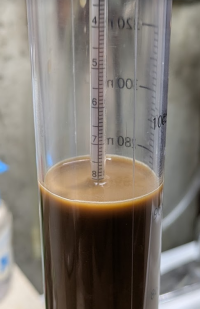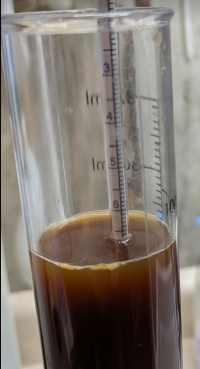5B-brewing
Well-Known Member
Tried searching the forums for an answer to this, but no luck.
Been fermenting a wit for the past two weeks @ 68*. Went to put it in a keg tonight and took a reading. The final gravity should be somewhere around 1.010. My reading came out at 1.020, a full 10 points higher than it should be. Lots of yeast and trub in suspension in the sample. Can this affect the gravity reading?
It is drinking really well and doesn't taste too sweet at all. My wife loved it, even flat and at fermentation temperatures, so I kegged it anyways. It's for a local competition, entries are due by Thursday, so I'm really scrambling at this point. Didn't leave myself a lot of wiggle room. Hoping that is just a faulty reading and not my flaked wheat and oats not converting.
Been fermenting a wit for the past two weeks @ 68*. Went to put it in a keg tonight and took a reading. The final gravity should be somewhere around 1.010. My reading came out at 1.020, a full 10 points higher than it should be. Lots of yeast and trub in suspension in the sample. Can this affect the gravity reading?
It is drinking really well and doesn't taste too sweet at all. My wife loved it, even flat and at fermentation temperatures, so I kegged it anyways. It's for a local competition, entries are due by Thursday, so I'm really scrambling at this point. Didn't leave myself a lot of wiggle room. Hoping that is just a faulty reading and not my flaked wheat and oats not converting.




































![Craft A Brew - Safale S-04 Dry Yeast - Fermentis - English Ale Dry Yeast - For English and American Ales and Hard Apple Ciders - Ingredients for Home Brewing - Beer Making Supplies - [1 Pack]](https://m.media-amazon.com/images/I/41fVGNh6JfL._SL500_.jpg)











